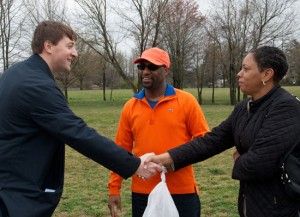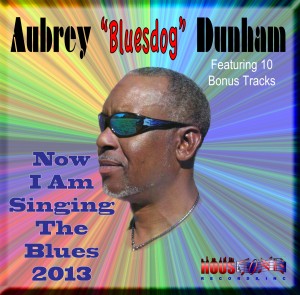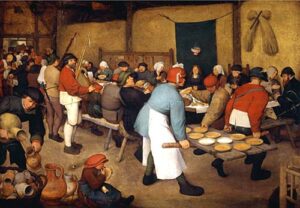 You have submitted your resume and have been asked to come in for an interview. Are you prepared? The following are questions you can expect to be asked, or variations thereof. They could apply for any position you are being interviewed for. For purposes of this article we have used Firefighter”.
You have submitted your resume and have been asked to come in for an interview. Are you prepared? The following are questions you can expect to be asked, or variations thereof. They could apply for any position you are being interviewed for. For purposes of this article we have used Firefighter”.
1. Why do you want to work in this industry?
Bad answer: “I like firefighting. I think it’s really cool.”
Don’t just say you like it. Anyone can “like” firefighting. Focus instead on your history with the industry, and if you can, tell a story.
Good answer: “I have always appreciated and admired those who put their lives on the line to protect our comminutes. My interest really piqued in firefighting however after I witnessed a post-crash rescue. I heard the calling as I watched the first response team pull the civilians to safety and out of harms way. It was then I knew that this is what I was meant to do.”
2. Tell us about yourself.
Bad answer: “I graduated four years ago from the University of Michigan, with a Bachelor’s degree in Biology – but I decided that wasn’t the right path for me. I switched gears and got my first job working in a fire department. Then I went on to work in another department and started participating in training courses. After that, I took a few months off to travel. Finally, I came back to start working again. And now, here I am, looking for a more challenging fire and rescue role.”
Instead of giving a chronological work history, focus on your strengths and how they pertain to the role. If possible, illustrate with examples.
Good answer: “I’m a very energetic and well-rounded person who can follow instructions well. I am a good communicator and quite a team player. At the last department I was with I initiated medic classes for the firefighters who were interested in learning first-aid techniques. Because it was such a success, the entire department is in the process of getting certifications for all members in different areas of response medical aid.”
3. What do you think of your previous boss?
Bad answer: “He was completely incompetent, and a nightmare to work with, which is why I’ve moved on”
Remember: if you get the job, the person interviewing you will some day be your previous boss. The last thing they want is to hire someone who they know is going to badmouth them some day. Instead of trashing your former employer, stay positive, and focus on what you learned from them (no matter how awful they might have been).
Good answer: “My last boss taught me the importance of time management – he didn’t pull any punches, and was extremely driven. His no-nonsense attitude pushed me to work harder, and to meet goals I never even thought were possible.”
4. Why are you leaving your current role?
Bad answer: “I can’t stand my boss, or the work I’m doing.”
Again, stay away from badmouthing your job or employer. Focus on the positive.
Good answer: “I’ve learned a lot from my current role, but now I’m looking for a newchallenge, to broaden my horizons and to gain new skill-sets – all of which, I see the potential for in this job.”
5. Where do you see yourself in five years?
Bad answer: “Relaxing on a beach in Maui,” or “Doing your job.”
There’s really no right answer to this question, but the interviewer wants to know that you’re ambitious, career-oriented, and committed to a future with the company. So instead of sharing your dream for early retirement, or trying to be funny, give them an answer that illustrates your drive and commitment.
Good answer: “In five years I’d like to have an even better understanding of fire and rescue. Also, I really enjoy being the first to a scene. I work very well under pressure. Ultimately, I’d like to be in a commander-type position, where I can use my organizational skills and industry knowledge to benefit the people working with me, and those we are there to help.”
6. What’s your greatest weakness?
Bad answer: “I work too hard,” or for the comedian, “Blondes.”
This question is a great opportunity to put a positive spin on something negative, but you don’t want your answer to be cliché – joking or not. Instead, try to use a real example of a weakness you have learned to overcome.
Good answer: “I’ve never been very comfortable with public speaking – which as you know, can be a hindrance. Realizing this was a problem, I asked my previous department if I could enroll in a speech workshop. I took the class, and was able to overcome my lifelong fear. Since then, I’ve given a lot of safety presentations to school children across the county. I still don’t love it, but no one else can tell!”
7. What salary are you looking for?
Bad answer: “In my last job I earned $35,000 – so, now I’m looking for $40,000”
If you can avoid it, don’t give an exact number. The first person to name a price in a salary negotiation loses. Instead, re-iterate your commitment to the job itself. If you have to, give a broad range based on research you’ve conducted on that particular role, in your particular city.
Good answer: “I’m more interested in the role itself than the pay. That said, I’d expect to be paid the appropriate range for this role, based on my five years of experience. I also think a fair salary would bear in mind the high cost of living here in New York City.”
8. Why should I hire you?
Bad answer: “I’m the best candidate for the role.”
A good answer will reiterate your qualifications, and will highlight what makes you unique.
Good answer: “I’ve been a firefighter for the past five years – my boss has said time and time again that without me, the department wouldn’t function so well. I’ve also taken the time to educate myself on some of the non-standard techniques used in first response. I can react quickly in hectic situations, and can handle the responsibilities of a leadership role. What’s good enough for most people is never really good enough for me.”
9. What is your greatest failure, and what did you learn from it?
Bad answer: I never finished law school – and everything that has happened since then has taught me that giving up, just because the going gets tough, is a huge mistake.”
You don’t want to actually highlight a major regret – especially one that exposes an overall dissatisfaction with your life. Instead, focus on a smaller, but significant, mishap, and how it has made you a better professional.
Good answer: “When I was in college, I took an art class to supplement my curriculum. I didn’t take it very seriously, and assumed that, compared to my Engineering classes, it would be a walk in the park. My failing grades at midterm showed me otherwise. I’d even jeopardized my scholarship status. I knew I had to get my act together. I spent the rest of the semester making up for it, ended up getting a decent grade in the class. I learned that no matter what I’m doing, I should strive to do it to the best of my ability. Otherwise, it’s not worth doing at all.”
10. How do you explain your gap in employment?
Bad answer: “I was so tired of working, and I needed a break,” or “I just can’t find a job.”
Employment gaps are always tough to explain. You don’t want to come across as lazy or unhireable. Find a way to make your extended unemployment seem like a choice you made, based on the right reasons.
Good answer: “My work is important to me, so I won’t be satisfied with any old job. Instead of rushing to accept the first thing that comes my way, I’m taking my time and being selective to make sure my next role is the right one.”
11. When were you most satisfied in your job?
Bad answer: “I was most satisfied when I did well, and got praised for my work.”
Don’t give vague answers. Instead, think about something you did well —and enjoyed— that will be relevant at this new job. This is an opportunity for you to share your interests, prove that you’re a great fit for the job and showcase your enthusiasm.
Good answer: “I’m a people person. I was always happiest — and most satisfied — when I was interacting with community residents, making sure I was able to meet their needs and giving them the best possible comfort in a tough situation. It was my favorite part of the job, and it showed. Part of the reason I’m interested in this job is that I know I’d have even more interaction with the public, on an even more critical level.”
12. What did you like least about your last job?
Bad answer: “A lack of stability. I felt like the place could collapse around me at any time.”
Try and stay away from anything that draws on the politics, culture or financial health of your previous employer. No matter how true it might be, comments like these will be construed as too negative. Also, you don’t want to focus on a function that might be your responsibility in the next role. So think of something you disliked in your last job, but that you know for sure won’t be part of this new role.
Good answer: “There was nothing about my last job that I hated, but I guess there were some things I liked less than others. My previous role involved traveling at least twice a month. While I do love to travel, twice a month was a little exhausting – I didn’t like spending quite so much time out of the department. I’m happy to see that this role involves a lot less travel.”
13. Describe a time when you did not get along with your coworker.
Bad answer: “I’m easy to get along with, so I’ve never had any kind of discord with another coworker.”
Interviewers don’t like these types of “easy out” answers. And besides, they know you are probably not telling the truth. Think of a relatively benign (but significant) instance, and spin it to be a positive learning experience.
Good answer: “I used to lock heads with a fellow EMT. We disagreed over a lot of things – from the care of civilians to who got what shifts to how to speak with a victim’s family. Our personalities just didn’t mesh. After three months of arguing, I pulled her aside and asked her to lunch. At lunch, we talked about our differences and why we weren’t getting along. It turns out, it was all about communication. We communicated differently and once we knew that, we began to work well together. I really believe that talking a problem through with someone can help solve any issue.”
14. What motivates you?
Bad answer: “Doing a good job and being rewarded for it.”
It’s not that this answer is wrong — it’s just that it wastes an opportunity. This question is practically begging you to highlight your positive attributes. So don’t give a vague, generic response — it tells them very little about you. Instead, try and use this question as an opportunity to give the interviewer some insight into your character, and use examples where possible.
Good answer: “I’ve always been motivated by the challenge – in my last role, I was responsible for training our new recruits and having a 100% success rate in passing scores. I know that this job is very fast-paced and I’m more than up for the challenge. In fact, I thrive on it.”
15. How would your friends describe you?
Bad answer: “I’m a really good listener.”
While being a good listener is a great personality trait, your employer probably doesn’t care all that much. It’s unlikely that they’re hiring you to be a shoulder to cry on. You’ll want to keep your answer relevant to the job you’re interviewing for, and as specific as possible. If you can, insert an example.
Good answer: “My friends would probably say that I’m extremely persistent – I’ve never been afraid to keep going back until I get what I want. When I worked as a program developer, recruiting keynote speakers for a major tech conference, I got one rejection after another – this was just the nature of the job. But I really wanted the big players – so I wouldn’t take no for an answer. I kept going back to them every time there was a new company on board, or some new value proposition. Eventually, many of them actually said “yes” – the program turned out to be so great that we doubled our attendees from the year before. A lot of people might have given up after the first rejection, but it’s just not in my nature. If I know something is possible, I have to keep trying until I get it.”
[Source: Monster.com | Fire Link } Jul 2013 ++]
 People have always been fascinated by the Universe; Archaeological finds demonstrate that as early as 5000 years ago, people already tried to analyze and interpret the movement of celestial bodies; ancient civilizations of Mesopotamia, Egypt, India, Central America, China, and Greece built first prototypes of astronomical observatories. Nowadays, thanks to impressive technological and scientific advances, it is becoming more and more plausible to imagine people being able to live on some other than the Earth planet.
People have always been fascinated by the Universe; Archaeological finds demonstrate that as early as 5000 years ago, people already tried to analyze and interpret the movement of celestial bodies; ancient civilizations of Mesopotamia, Egypt, India, Central America, China, and Greece built first prototypes of astronomical observatories. Nowadays, thanks to impressive technological and scientific advances, it is becoming more and more plausible to imagine people being able to live on some other than the Earth planet. Moreover, in recent years a new phenomenon called “space tourism” or “citizen space exploration” has taken place. While very few people were able to take advantage of it due to its really astronomical price which goes anywhere from twenty to forty million dollars per person, people still seem to be intrigued by the possibility of living on some other planet in the future. Of course, there are numerous variables to consider: gravity, radiation levels, temperature, and the availability of life-sustaining recourses such as water. So far, NASA scientists reported the discovery of some Earth-like planets in the habitable orbit of sun-like stars which are not too cold or hot for water (essential factor for possible life). And, quite frankly, it does seem plausible that in an infinite universe there might be at least one planet capable of sustaining life besides the Earth.
Moreover, in recent years a new phenomenon called “space tourism” or “citizen space exploration” has taken place. While very few people were able to take advantage of it due to its really astronomical price which goes anywhere from twenty to forty million dollars per person, people still seem to be intrigued by the possibility of living on some other planet in the future. Of course, there are numerous variables to consider: gravity, radiation levels, temperature, and the availability of life-sustaining recourses such as water. So far, NASA scientists reported the discovery of some Earth-like planets in the habitable orbit of sun-like stars which are not too cold or hot for water (essential factor for possible life). And, quite frankly, it does seem plausible that in an infinite universe there might be at least one planet capable of sustaining life besides the Earth. who like the unknown and our technological progress is truly astounding. Many things which seemed like something out of sci-fi books and movies are becoming a reality; and it is not so far-fetched to imagine that someday people will be able to develop technologies which would allow us to live on another planet. Also, there is another, much more gruesome, possibility that people will simply be unable to continue living on Earth due to some catastrophe such as ecological, nuclear, being hit by an asteroid, or overpopulation. While it is difficult to consider such awful scenarios, it is still better to be somehow prepared for them. Consequently, it is crucial that further exploration of space continues. – Becky Kospanova
who like the unknown and our technological progress is truly astounding. Many things which seemed like something out of sci-fi books and movies are becoming a reality; and it is not so far-fetched to imagine that someday people will be able to develop technologies which would allow us to live on another planet. Also, there is another, much more gruesome, possibility that people will simply be unable to continue living on Earth due to some catastrophe such as ecological, nuclear, being hit by an asteroid, or overpopulation. While it is difficult to consider such awful scenarios, it is still better to be somehow prepared for them. Consequently, it is crucial that further exploration of space continues. – Becky Kospanova

 How wonderful it is to realize that we have a great gift: choice. the next time you are in the market, notice the many choices you have. You like cheese? Well, there is gouda, cheddar (sharp or mild), goat cheese, mozzarella; the list goes on.
How wonderful it is to realize that we have a great gift: choice. the next time you are in the market, notice the many choices you have. You like cheese? Well, there is gouda, cheddar (sharp or mild), goat cheese, mozzarella; the list goes on. Modern life is so much more different from what it used to be just few decades ago. Seemingly everyday, new technologies are developed which allow people to access all kind of information and communicate with people from anywhere in the world. However, at the same time the Americans seem to know less and less people who live right next door to them. It is a fairly new phenomenon because our grandparents and even our parents knew most of their neighbors rather well. But not anymore—for many Americans their whole interaction with neighbors is reduced to perfunctory hand wave and an occasional small talk in passing. For some, it is a perfect arrangement because they really do not have to be friendly with people with whom they happened to live nearby by chance; others might feel that they are missing an opportunity to get to know their neighbors, be helpful to each other if necessary, and maybe get a new friend.
Modern life is so much more different from what it used to be just few decades ago. Seemingly everyday, new technologies are developed which allow people to access all kind of information and communicate with people from anywhere in the world. However, at the same time the Americans seem to know less and less people who live right next door to them. It is a fairly new phenomenon because our grandparents and even our parents knew most of their neighbors rather well. But not anymore—for many Americans their whole interaction with neighbors is reduced to perfunctory hand wave and an occasional small talk in passing. For some, it is a perfect arrangement because they really do not have to be friendly with people with whom they happened to live nearby by chance; others might feel that they are missing an opportunity to get to know their neighbors, be helpful to each other if necessary, and maybe get a new friend. Americans have always been a nation which prized their privacy and the right to protect their properties; as a result, we are often disinclined to approach a neighbor out of fear to feel unwelcomed. Also, Americans move from one place to another much more often nowadays. Thus, we often fail to establish relationships with ever-changing neighbors. In addition, modern families are often two-career families and there is nobody home most of the day and, after a long day of work, people rarely have time to associate with their neighbors. After all, there is housework to do, dinner to be prepared, children to be taken care of—the list is long. Moreover, new technologies allow us to keep up with just about anything happening in the world; as such, simple, face-to-face interaction with your neighbors is often less interesting and stimulating for many. These are just few factors, and it is a fact of our modern life that sometimes it is simply easier not to get friendly with our neighbors.
Americans have always been a nation which prized their privacy and the right to protect their properties; as a result, we are often disinclined to approach a neighbor out of fear to feel unwelcomed. Also, Americans move from one place to another much more often nowadays. Thus, we often fail to establish relationships with ever-changing neighbors. In addition, modern families are often two-career families and there is nobody home most of the day and, after a long day of work, people rarely have time to associate with their neighbors. After all, there is housework to do, dinner to be prepared, children to be taken care of—the list is long. Moreover, new technologies allow us to keep up with just about anything happening in the world; as such, simple, face-to-face interaction with your neighbors is often less interesting and stimulating for many. These are just few factors, and it is a fact of our modern life that sometimes it is simply easier not to get friendly with our neighbors.
 HousTone Records Announces The Releases Of
HousTone Records Announces The Releases Of HousTone Records Announces
HousTone Records Announces  After Several Restaurant Chains Announce That They will be refusing to serve customers with saggin pants; I elected to repost this story just to keep the public aware of the true meaning behind the issue.
After Several Restaurant Chains Announce That They will be refusing to serve customers with saggin pants; I elected to repost this story just to keep the public aware of the true meaning behind the issue. I told him the origin of that look was from centuries ago. It was the intent of slave owners to demoralize the field workers by forbidding them to wear a belt as they worked in the fields or at any other rigorous job. In addition, men in prison wore their pants low when they were ‘spoken for. The other reason their pants looked like that was they were not allowed to have belts because prisoners were likely to try to commit suicide. And, saggin’ pants prevents you from running.
I told him the origin of that look was from centuries ago. It was the intent of slave owners to demoralize the field workers by forbidding them to wear a belt as they worked in the fields or at any other rigorous job. In addition, men in prison wore their pants low when they were ‘spoken for. The other reason their pants looked like that was they were not allowed to have belts because prisoners were likely to try to commit suicide. And, saggin’ pants prevents you from running. Clever History Lesson for People who can Appreciate it! The next time you are washing your hands and complain because the water temperature isn’t just how you like it, think about how things used to be.
Clever History Lesson for People who can Appreciate it! The next time you are washing your hands and complain because the water temperature isn’t just how you like it, think about how things used to be.
 the bones to a bone-house, and reuse the grave. When reopening these coffins, 1 out of 25 coffins were found to have scratch marks on the inside and they realized they had been burying people alive. So they would tie a string on the
the bones to a bone-house, and reuse the grave. When reopening these coffins, 1 out of 25 coffins were found to have scratch marks on the inside and they realized they had been burying people alive. So they would tie a string on the Most people, after experimenting with different types of alcohol, choose their favorite drink and stick to it. There is a wide range of alcohol to choose from: hard liquors, different cocktails, dazzling variety of wines and, of course, many types of beers. As such, many people believe that a choice of drink can tell a lot about a person’s character and life style. What are some of the most widespread beliefs associated with favorite alcoholic beverage?
Most people, after experimenting with different types of alcohol, choose their favorite drink and stick to it. There is a wide range of alcohol to choose from: hard liquors, different cocktails, dazzling variety of wines and, of course, many types of beers. As such, many people believe that a choice of drink can tell a lot about a person’s character and life style. What are some of the most widespread beliefs associated with favorite alcoholic beverage? vary greatly in price depending on region and year it was produced. French and Italian wines, with their superior grapes and rich traditions, are often the most expensive ones; Australian, South African, Chilean, and American wines are often more affordable and some can be very good. While wine drinkers can sometimes come off as pretentious and somewhat snooty, many people drink red wine because of its health advantages; scientists assert that it is good for your heart. Interestingly, according to 2011 statistics provided by International Wine and Spirit Research and Vinexpo, traditional countries with highest rates of wine consumption such as France, Italy, Spain, Austria, and Germany were pushed over by US, where experts predict that by 2015 there will be 13 liters of wine consumed per adult per year. Two more countries, which are emerging as big wine markets, are China and Hong Kong. As such, wine is becoming a drink of choice for many people across the countries.
vary greatly in price depending on region and year it was produced. French and Italian wines, with their superior grapes and rich traditions, are often the most expensive ones; Australian, South African, Chilean, and American wines are often more affordable and some can be very good. While wine drinkers can sometimes come off as pretentious and somewhat snooty, many people drink red wine because of its health advantages; scientists assert that it is good for your heart. Interestingly, according to 2011 statistics provided by International Wine and Spirit Research and Vinexpo, traditional countries with highest rates of wine consumption such as France, Italy, Spain, Austria, and Germany were pushed over by US, where experts predict that by 2015 there will be 13 liters of wine consumed per adult per year. Two more countries, which are emerging as big wine markets, are China and Hong Kong. As such, wine is becoming a drink of choice for many people across the countries. One of the best months of the year—and many people concur—is October. The heat and humidity of summer are gone; the coldness of winter is still far away. October is the month of perfect weather and breathtaking beauty. In many parts of the country, people visit countryside and parks to admire autumnal views—leaves are turning vivid red, yellow, and orange; the sky is bright blue; the air is crisp and invigorating. However, the month of October is not just about the beautiful weather; there are also interesting traditions and rich history associated with it.
One of the best months of the year—and many people concur—is October. The heat and humidity of summer are gone; the coldness of winter is still far away. October is the month of perfect weather and breathtaking beauty. In many parts of the country, people visit countryside and parks to admire autumnal views—leaves are turning vivid red, yellow, and orange; the sky is bright blue; the air is crisp and invigorating. However, the month of October is not just about the beautiful weather; there are also interesting traditions and rich history associated with it.
 The lawyer immediately stood objecting to the ruling saying, “Your honor, How can you possibly dismiss this case? The Christians have Christmas, Easter and others. The Jews have Passover, Yom Kippur and Hanukkah, yet my client and
The lawyer immediately stood objecting to the ruling saying, “Your honor, How can you possibly dismiss this case? The Christians have Christmas, Easter and others. The Jews have Passover, Yom Kippur and Hanukkah, yet my client and Here are some nutritional ingredients that are good for you:
Here are some nutritional ingredients that are good for you: diseases. One example is lycopene, normally found in tomatoes. Lycopene, as well as other anti-oxidants can be added to regular foods, turning them into super-healthy functional foods.
diseases. One example is lycopene, normally found in tomatoes. Lycopene, as well as other anti-oxidants can be added to regular foods, turning them into super-healthy functional foods. You have submitted your resume and have been asked to come in for an interview. Are you prepared? The following are questions you can expect to be asked, or variations thereof. They could apply for any position you are being interviewed for. For purposes of this article we have used Firefighter”.
You have submitted your resume and have been asked to come in for an interview. Are you prepared? The following are questions you can expect to be asked, or variations thereof. They could apply for any position you are being interviewed for. For purposes of this article we have used Firefighter”.